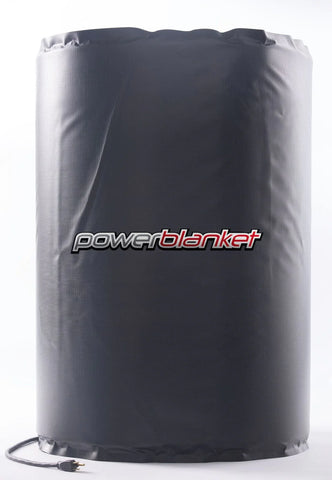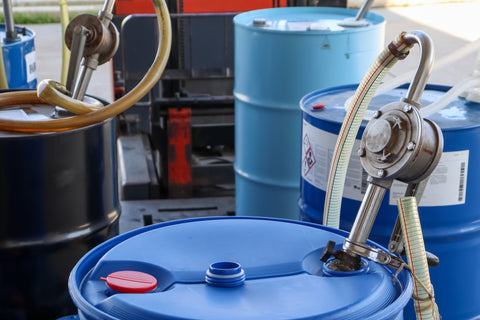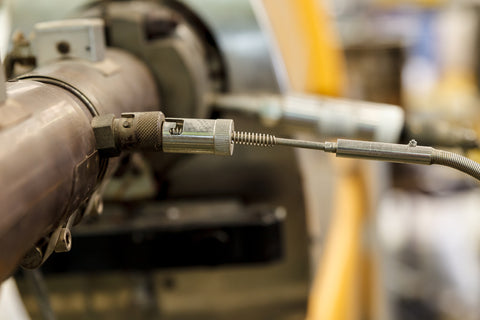What is a 5-Gallon Bucket?
Origin and Usage
The 5-gallon bucket has a rich history as a storage, measurement, and transportation staple. Originating from the need to carry and store large volumes of liquids and materials, this bucket has revolutionized how industries operate. From farms where they've been used to transport milk and grains to factories where they serve as containers for raw materials, the question of "how many gallons in a bucket" has been answered emphatically by this utility container. Often made of durable plastic, this bucket size is reliable and versatile, serving numerous purposes across various industries.
Physical Dimensions
A standard 5-gallon bucket typically has a diameter of about 12 inches. This diameter ensures the bucket remains stable when filled, reducing the chances of tipping over. However, the exact dimensions can vary slightly based on the manufacturer, with some offering slightly taller or wider designs to cater to specific needs. These buckets are usually round, optimal for ensuring even weight distribution, especially when considering how heavy it will be when filled. Moreover, the variations in thickness and style often depend on the intended use, what it is made of, whether that is plastic or metal, and with thicker walls for heavy-duty tasks and different styles to suit aesthetic or functional preferences.

Breaking Down the Volume
How Many Gallons in a Bucket?
The answer to the question "What is the volume of 5-gallon bucket?", is quite simple: it holds 5 gallons of liquid. This specific volume measurement might seem straightforward, but it's one of the common questions people often have, especially when comparing container sizes or when they're new to tasks that involve such containers. To put it into a more relatable perspective, imagine filling up about 20 quart-sized milk jugs; that's roughly the amount of liquid a single 5-gallon bucket can accommodate.
Converting Volume to Other Units
Understanding volume measurements is crucial in various activities, from cooking to industrial tasks. This bucket size provides a handy reference when you're looking to measure gallons or convert this volume to other common units. For instance, considering that one gallon is equivalent to roughly 3.79 liters, a simple calculation will reveal that a 5-gallon bucket can hold approximately 18.93 liters. This makes it easier for international individuals or businesses to communicate measurements without confusion.
Weight Considerations for a 5-Gallon Bucket
The Empty Weight of a Bucket
While the primary purpose is to hold and transport materials, the weight of the bucket itself is an essential aspect to consider, especially if it needs to be moved or carried often. A standard empty 5-gallon bucket, predominantly manufactured from sturdy plastic, might weigh between 2 to 2.5 pounds. This weight can fluctuate slightly depending on the design, the thickness of the bucket's walls, and any additional features or enhancements it might have, like reinforced handles or a lid. Certain manufacturers might also add grips or other design elements that can influence the bucket's empty weight.
Bucket Weight When Filled
Before filling a 5-gallon bucket, it's important to note that the total weight you'll be dealing with will be a sum of the container and its contents. Consider the question, how much does 5 gallons of water weigh vs. something like molasses or grain that will be heavier when filling the same amount of space? The weight of a filled 5-gallon bucket is largely dictated by what you put inside it. Taking water as a standard example, considering a gallon of water weighs about 8.34 pounds, the water alone in a filled bucket will weigh approximately 41.7 pounds. Now, if you add the weight of the bucket, which is about 2 to 2.5 pounds, you're looking at carrying close to 44 pounds. If filled with denser materials, like sand or certain chemicals, the "5 gallon bucket weight" can be considerably higher.
Practical Applications and Benefits
Everyday Uses
5-gallon buckets are versatile containers that have become ubiquitous in many settings due to their durability and functionality. In homes, they're commonly used for storage – holding everything from toys to non-perishable food items. On construction sites, these buckets are handy for holding tools, nails, or even mixing materials. Meanwhile, garden enthusiasts might use them as portable water containers, for collecting garden waste, or even as makeshift planters. Their sturdy design, combined with the availability of lid options, ensures that contents stay secure, making them ideal for a myriad of tasks both indoors and out. Given the wide range of applications for these buckets the issue of temperature control of the bucket often becomes an issue.
There are many different options for bucket warming on the market including a base heating option of full wrap designs that allow for even and consistent temperature control.
Benefits of Knowing Exact Volume and Weight
 The practicality of a bucket is amplified when one knows its exact volume and weight. By understanding the volume of a 5-gallon bucket, individuals can ensure precision in projects – be it mixing paint to get a consistent color, transporting liquids without spilling or storing goods systematically. Knowing the weight, especially when filled, is crucial for safety reasons. Overloading a bucket can lead to strain injuries or spills, but one can avoid these pitfalls with the right knowledge. This information equips users to work more efficiently, safely, and confidently in various applications.
The practicality of a bucket is amplified when one knows its exact volume and weight. By understanding the volume of a 5-gallon bucket, individuals can ensure precision in projects – be it mixing paint to get a consistent color, transporting liquids without spilling or storing goods systematically. Knowing the weight, especially when filled, is crucial for safety reasons. Overloading a bucket can lead to strain injuries or spills, but one can avoid these pitfalls with the right knowledge. This information equips users to work more efficiently, safely, and confidently in various applications.
Wrapping It Up: The Significance of the 5-Gallon Bucket
The unassuming 5-gallon bucket, though frequently overlooked, is an integral tool in countless scenarios. Whether it's used in a professional setting or as a household chore, its contribution is undeniable. The humble 5-gallon bucket, often sitting unnoticed in a corner, plays a pivotal role in various mundane and critical tasks. Grasping the understanding of how much you can fill it and how heavy it will be when filled helps streamline tasks and ensures safety. As we've delved into its details, it's evident that having a deeper knowledge about these containers is more than just trivia.
Moreover, as you explore different buckets and pails available in the market, always consider the value of knowing their exact dimensions and capabilities. Also, consider what temperature control options you might need to prevent freezing or thickening of products to better understand mastering this temperature control for your buckets. This understanding can significantly impact the efficiency and success of your projects and enhance the utility of this everyday item.







